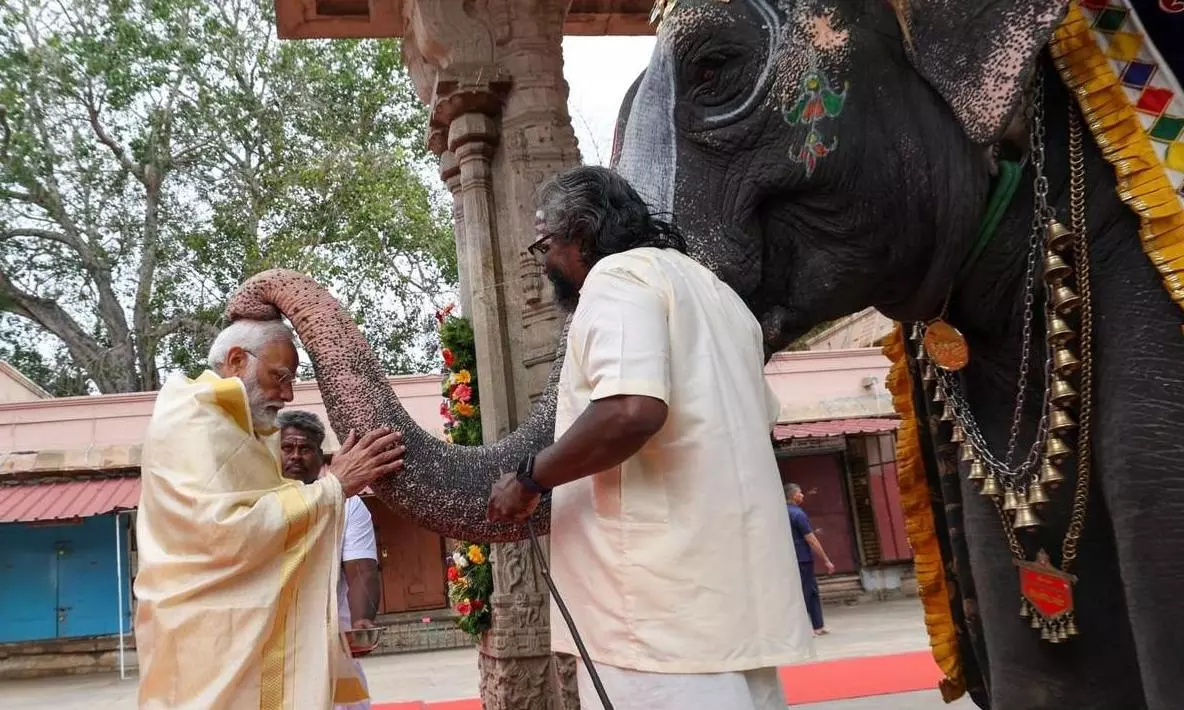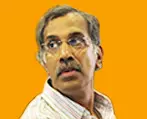
- Home
- India
- World
- Premium
- THE FEDERAL SPECIAL
- Analysis
- States
- Perspective
- Videos
- Sports
- Education
- Entertainment
- Elections
- Features
- Health
- Business
- Series
- In memoriam: Sheikh Mujibur Rahman
- Bishnoi's Men
- NEET TANGLE
- Economy Series
- Earth Day
- Kashmir’s Frozen Turbulence
- India@75
- The legend of Ramjanmabhoomi
- Liberalisation@30
- How to tame a dragon
- Celebrating biodiversity
- Farm Matters
- 50 days of solitude
- Bringing Migrants Home
- Budget 2020
- Jharkhand Votes
- The Federal Investigates
- The Federal Impact
- Vanishing Sand
- Gandhi @ 150
- Andhra Today
- Field report
- Operation Gulmarg
- Pandemic @1 Mn in India
- The Federal Year-End
- The Zero Year
- Science
- Brand studio
- Newsletter
- Elections 2024
- Events
- Home
- IndiaIndia
- World
- Analysis
- StatesStates
- PerspectivePerspective
- VideosVideos
- Sports
- Education
- Entertainment
- ElectionsElections
- Features
- Health
- BusinessBusiness
- Premium
- Loading...
Premium - Events

In the past, the saffron family in Tamil Nadu has attempted various methods to spread its appeal
The Bharatiya Janata Party is changing tack and turning towards ‘soft Hindutva' in Tamil Nadu to woo its stubborn electorate. Prime Minister Narendra Modi’s three-day visit to the state ahead of the consecration of the Ram Temple in Ayodhya is a move in that direction.
The Prime Minister’s two-night stay in Tamil Nadu with an unprecedented sleepover at a math in Rameswaram presents a benign face of Hindutva where its leading practitioner on a spiritual trip prays and seeks the blessings of the gods for the welfare of the nation and self.
Unmissable imagery
The imagery is unmissable. Clad in a dhoti, sporting a single cloth on his chest, Modi moved from temple to temple, taking holy dips and receiving prasadams, or sacred food, and blessings from the priests.
At Srirangam, he worshipped at the Sri Ranganathaswamy Temple with Lord Vishnu and his various avatars — including Lord Rama — as leading deities. He then flew to Rameswaram to visit the Ramanathaswamy Temple.
He offered prayers at the Kothandarama Swamy (Ram with a bow and arrow) Temple at Dhanushkodi and visited Arichalmunai, said to be the place from where the Ram Setu was built.
Ramayana connect
The trip had a Ramayana connect, as he visited and worshipped at places where mythologically Rama too is supposed to have travelled and prayed before returning to Ayodhya after a successful campaign in Lanka. During his stay at sundown, Modi heard holy verses and hymns from Kamba Ramayanam sung by the devout.
This contrasts with his official trips, where the political temperature would get ratcheted up with BJP leaders hailing his trip and his political opponents criticising it. The usual political rhetoric too was missing as the Prime Minister’s visit amidst media glare was passed off as a spiritual journey as he followed ascetic practices.
Past attempts
In the past, the saffron family in Tamil Nadu has attempted various methods to spread its appeal. To begin with, it tried an extension of its ‘hard Hindutva’ practised in the North.
During the Ram Janmabhoomi agitation, bricks with Shri Ram inscribed on them were collected from Tamil Nadu as from the rest of India. But it didn’t evoke any passion.
Earlier, on February 14, 1998, when BJP stalwart LK Advani was to visit Coimbatore, it was hit by a series of bomb blasts in which 58 people were killed and more than 200 injured.
Tamil Nadu and South India, considered relatively peaceful as compared to the North, was on the terror map for the first time. The political fallout was immediate as CP Radhakrishnan, then BJP candidate for the Parliament polls in Coimbatore, won with a record margin.
Culturally integrated
The communal disease, however, could not take deep roots in the state as opposed to northern parts of India, where the atmosphere continued to be vitiated by sustained othering of minorities.
The minorities in Tamil Nadu are more culturally integrated. It is common to see Christian, Muslim and Hindu women using each other's cultural and religious markers. Hindus routinely celebrate cultural events in neighbourhood mosques and churches.
Advani’s interpretation of cultural nationalism propounded by Deen Dayal Upadhyaya was a mosaic of religions and communities of India bound by Hindutva.
For secularists, majoritarian domination was implicit in the argument. As opposed to this, in Tamil Nadu’s language, religious and regional autonomy form the basis of cultural nationalism.
Education spread
Prolonged grassroots political movements have significantly contributed to the equitable and inclusive spread of education in the state and, as a result, Tamil Nadu tops educational attainment among Muslims in India.
The percentage of Muslims who have completed graduation is 36 per cent in Tamil Nadu, as against 13 per cent in Gujarat and 16 per cent in Maharashtra, with the all-India average at 14 per cent.
The saffron family, however, continued to make serious attempts to increase its support base in Tamil Nadu. Its cadres enthusiastically participated in Ganesh Chaturthi festivities and processions across the state.
Union Minister of State for Information and Broadcasting, L Murugan, took out a ‘Vel Yatra’ as the party realised that Lord Murugan is the dominant deity of the state. But none of the attempts worked.
Kashi Sangamam
The aggressive use of religious symbolism gradually gave way to a softer version of Hindutva. The Prime Minister’s ‘Kashi Sangamam’ sought to highlight a historical connect between the North and South.
People enthusiastically welcomed the initiative. They also cheered the frequent use of Tamil words and couplets in Modi’s addresses during his state visits.
The Prime Minister’s recent ascetic journey, too, is likely to draw the appreciation of Tamilians, as they are inherently religious. Modi’s gesture resonates with them, as this is what they practise as part of their daily routine.
Political impact
Can Modi’s temple trip, part of his 11-day rituals, packaged as soft Hindutva, be electorally beneficial for the party? Unlikely, because Tamils are still prioritising socio economic issues over the BJP’s identity politics based on religion.
They perceive the Centre as biased. One that does not share tax proceeds justifiably — that their hard-earned money is transferred disproportionally to states in the North where BJP is in power.
Though the Centre has often refuted that there is any effort to impose Hindi on them, its insistence on the use of Hindi names for central schemes as necessary eligibility for central grants has left the people of Tamil Nadu irritated.
The perception that even during times of natural disasters such as floods the Centre is miserly with extending aid is another grouse.
Regional partners
The BJP, facing a strong alliance led by the DMK in the state, is unable to find a powerful response. The party still hopes that the AIADMK will come around and it will be able to unite all its factions.
It is, therefore, still restrained, and has asked all its leaders and cadres to refrain from speaking on issues related to the alliance.
It is now more or less certain that the BJP will have to face the parliamentary elections in the state on its own with some minor partners. The leadership is hence attempting to woo the electorate with a change in strategy.
Dravidian parties, especially the DMK, may be leading in this round, but they need to remember that the saffron movement backing the current regime takes a long-term view of politics.


